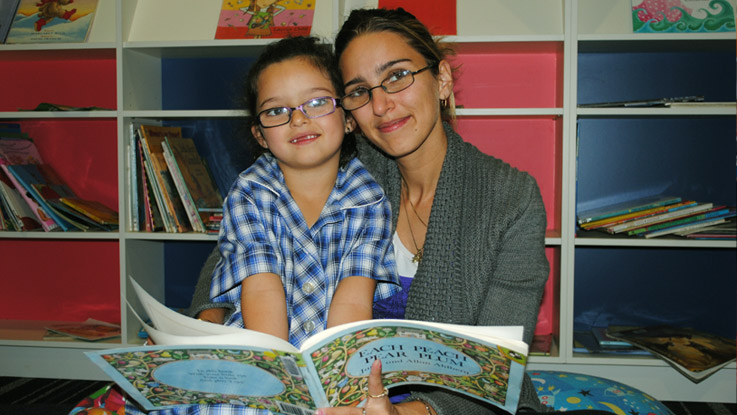
Is mobilising and listening to community a diminishing superpower

Meeting the challenges of community engagement in a changing world is difficult, but vitally important, writes Doug Taylor, in the second in a four-part series written to coincide with The Smith Family’s centenary.
Dough Taylor
Chief Executive Officer at The Smith Family
I turned 50 last year. Since my birth, the Australian not-for-profit (NFP) sector has been transformed. It’s brought many good developments for our work, but I worry that, in the process, we are losing one of our greatest “superpowers”; the ability to mobilise the power of the wider community, while staying in touch with their needs and interests.
This is a huge consideration for us at The Smith Family, as we embark on our next century, and a new five-year strategy.
Our community must remain at the heart of what we do – from the 58,000 students we support through our Learning for Life education support program, to the nearly 230,000 individual supporters, and 220 business partners who generously donate their time, skills and money each year.
Read part one of this series: Rediscovering not for profit ‘superpowers’ for the challenges ahead
Over time, how the NFP sector has engaged the community has taken many forms. Typically, it means involving the wider community in organisational decision-making and leadership (governance), providing financial support and diversification of income (fundraising), and getting involved in our organisation’s work (volunteering).
The most successful organisations stay true to their purpose, but change how they engage the community – they adapt to changing lifestyles, and interests. The benefits of this go beyond continuing to mobilise resources for our work. Bringing in different mindsets and lived experience enables us to be more innovative, and effective. It’s a way to ensure our organisations both listen and respond to the community, while shaping and leading it, in line with our purpose.
In recent years, however, the balance has shifted from community-led models, to an increasing reliance on government funding, or income from government-regulated markets. As we’ve tipped over into a more professionalised workforce, I worry that – without a significant operational rethink – we risk losing that critical community focus and input.
Don’t get me wrong, the investment that government has made in community services over the last 50 years has been game-changing, whether it be for child protection, domestic violence, mental health, aged care or disability services. However, in being too reliant on government, has the not-for-profit superpower – mobilising and listening to the wider community – been weakened?
Tony Nicholson, a former CEO of the Brotherhood of St Laurence, addressed this in a speech on the Future of the Welfare Sector back in 2014. In this, he challenged the prevailing wisdom that “our sector can continue to meet society’s current and emerging needs by contracting to government, expanding and aggregating organisations, driving for greater efficiency, and further professionalising, regulating and circumscribing care”.
He argued that continuing to work in this way is neither sustainable – “there will simply not be the money to fund current practitioner intensive service models to meet the growth in population” – nor desirable because of the alienation of volunteers and community involvement in community services.
When addressing contemporary challenges such as this, it’s worth looking backwards for clues. I’ve been delving into The Smith Family archives recently, to read about the early days of the organisation, and how it has harnessed the power of community over many decades.
The Smith Family – from its very beginnings in 1922 – was like most charities who relied on the community for support, given the limited nature of government subsidies. By 1924’s Christmas appeal, the organisation had coined its own terminology – the “joy-spreader” – to emphasise its aspirations of helping the poor and affirming the important role of community members in delivering this goal.
This powerfully communicated the two halves of The Smith Family story: “joy-spreaders” were acts of charity, but they were also the volunteers and members who formed the lifeblood of the organisation. Of course, we now know that charitable endeavours could at times be discriminatory, and not evenly distributed, but from the early days The Smith Family was committed to working with the broader community.
Another innovation came in the 1960s with the establishment of VIEW Clubs (Voice, Interests and Education of Women), at a time when women were largely excluded from many aspects of public life. George Forbes, then general secretary of The Smith Family, saw the potential for an organisation that encouraged women to come together outside the home to socialise, network and be change agents in working with children and families in need, through The Smith Family and their local community.
Sixty years on, there are more than 300 VIEW Clubs across Australia with over 14,000 members, and their fundraising efforts help support 1,500 students on the Learning for Life program. Many of these women also support The Smith Family’s work as volunteers.
Most not for profits would have similar stories of community engagement in their work, which are not only inspiring to read, but are central to our role in society.
Community support shapes our thinking and work, and it mitigates the risk of “being right but irrelevant”. In a democratically-oriented nation, this practice provides both legitimacy and ongoing critique for our causes. It also helps us leverage new and different types of resources to sustain our work.
So how do you ensure this community-focused superpower is still alive in your organisation?
For me, two things come to mind:
1. Ensure that your board is listening to your community
We know that it’s harder to get people to become members of organisations – to convert interest into action. It can create a challenge in keeping organisations accountable to their community, and has resulted in the contemporary trend of boards being largely accountable to themselves. There are long debates in governance literature about this, but how does your board stay connected and accountable to the community you serve?
2.Ensure that in providing your services, you create space for community involvement.
Fundraising, volunteering, and promoting your cause are the obvious opportunities.
We know these each have challenges; fewer people on average are giving and volunteering, and people are not able to commit to longer-term, regular programs. But we also see new organisations emerging every day, who are adapting, and tapping into Australian passions and lifestyles.
How are you going, tapping into the unlimited resources of your community?
It’s hard – but necessary – and has benefits much deeper than more resources, reflecting the essential identity of Australian not for profits.
In my next piece, I’ll look at the importance of addressing new social challenges courageously – reinventing our organisations in the process.
Originally published 22nd April, 2022 on ProBono Australia
